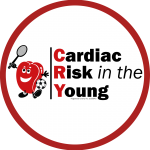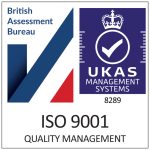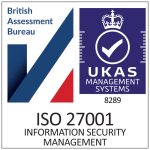About SADS
Introduction – about Sudden Arrhythmic Death Syndrome (SADS)
You may be reading this website because a young relative of yours – perhaps a member of your own family – has died suddenly and unexpectedly to learn more about SADS and the causes of SADS. This is not only a tragedy for the person and all your family, but a great loss for society too. You may still be asking why it happened, and how it could have happened to someone so young and who perhaps seemed so healthy. Or maybe your doctor has suggested that you should have some tests to find out if you have inherited the same medical condition as the person who has died.
This website outlines the possible causes of sudden death in young people and children. It concentrates on the medical conditions responsible for a sudden unexpected death where a definite cause cannot be found, even after a postmortem.
This is called Sudden Arrhythmic Death Syndrome, or SADS.
The website:
- describes what happens after someone has died suddenly and unexpectedly
- explains how the heart works and how it can cause sudden death
- explains what causes SADS and why it is important that the close blood relatives of the person who has died should have a medical examination and tests to find out if they have inherited the same condition
- describes the tests your doctor may ask you to have, and
- offers advice on how to live a healthy lifestyle if you are found to have one of the conditions that can sometimes lead to sudden death.
We have tried to explain medical and technical terms as we go along but, if you find a word you do not understand, you can look it up in the list of technical terms.
We hope that this website will help you and your family understand what has happened, and hopefully help you come to terms with the event. If you need further help or information contact CRY on 01737 363 222 or visit www.c-r-y.org.uk.
What is the difference between Sudden Arrhythmic Death Syndrome (SADS) & Sudden Cardiac Death (SCD)?
Sudden Cardiac Death (SCD)
Sudden cardiac death is a dramatic and/or spontaneous death that is thought to be (and usually is) caused by a heart condition.
Sudden Arrhythmic Death Syndrome (SADS)
In about 1 in every 20 cases of sudden cardiac death, no definite cause of death can be found, even after the heart has been examined by an expert cardiac pathologist. This is then called Sudden Arrhythmic Death Syndrome. In the past it has also been called Sudden Adult Death Syndrome or Sudden Death Syndrome but, because it affects children too, the term Sudden Arrhythmic Death Syndrome is now used. It is thought that cot death (Sudden Infant Death Syndrome, or SIDS) may be partly due to the same causes responsible for SADS.
What happens after an unexpected sudden death in a young person
After an unexpected sudden death it is usual that the coroner of the area where the death has happened will ask for a post-mortem to be performed. This involves the body being examined by a pathologist. Small samples of tissue from organs including the heart are often taken and examined under a microscope. Usually the pathologist can easily detect any abnormality like significant coronary artery disease (furring of the arteries) or pulmonary embolus (a clot on the lung). The coroner will take into account the circumstances of the death and, if necessary, will do tests for signs of any medications or drugs in the body. If it is difficult to assess the heart or to detect any abnormality in it, the pathologist may ask for the help of an expert cardiac pathologist (one who specialises in the heart) to determine the cause of death.
Coping with a young sudden cardiac death
The death of a child or young adult is so totally out of order with the sequence of life that it can have devastating consequences within the family. With a sudden death, not only has there been no preparation for such a death as in terminal illness, nor is the death accidental when there is an obvious and direct link between an occurrence and the tragic consequences. This can lead to those closest to the one who has died blaming themselves for overlooking possible symptoms. Dealing with their terrible loss is then compounded by feelings of guilt.
Devastating grief is not just something that will affect your emotions. It can also have physical consequences that leave you exhausted, feeling sick and unable to eat or sleep. When there has been a young death from a heart disorder – particularly if there is a possibility that this may have been a genetic condition – family members can subsequently start suffering from breathlessness, chest pains and dizziness, all of which are recognisable cardiac symptoms which can in themselves be frightening.
Sharing the way you feel about what has happened is very important, but it is not always easy to do this with others who are suffering directly from the same loss.
CRY is a charity that offers help, support and counselling to families where there has been a sudden cardiac death of an apparently fit and healthy young person. Please call us on 01737 363 222 if you want any further help or information, or if you would like to be put in touch with someone who has gone through a similar experience to yourself.
Alison Cox (MBE)
Founder of CRY



